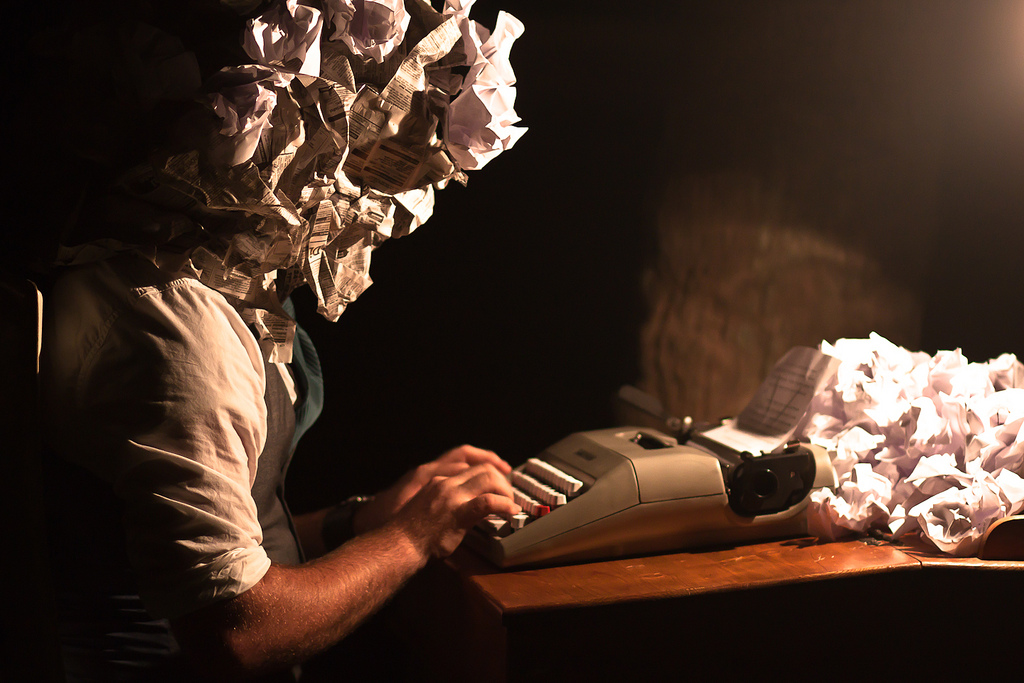 Creative writing is hard. Like, really, really hard. While I can bang out an academic paper in no time at all, I find myself agonizing over the keyboard for hours just to churn out a couple measly pages. Oftentimes, I find that the hardest part of creative writing is just starting the story. With so many TV shows to watch, games to play, and Wikipedia articles to suddenly become interested in, I have difficulty bringing myself to open up a fresh word doc and begin. And when I do start a story, sometimes my ideas just fizzle up and disappear, leaving me with a blank mind staring at a blank computer screen. After several minutes of well-intentioned (but ultimately fruitless) staring, I usually end up closing the word document, and abandoning the writing process altogether.
Creative writing is hard. Like, really, really hard. While I can bang out an academic paper in no time at all, I find myself agonizing over the keyboard for hours just to churn out a couple measly pages. Oftentimes, I find that the hardest part of creative writing is just starting the story. With so many TV shows to watch, games to play, and Wikipedia articles to suddenly become interested in, I have difficulty bringing myself to open up a fresh word doc and begin. And when I do start a story, sometimes my ideas just fizzle up and disappear, leaving me with a blank mind staring at a blank computer screen. After several minutes of well-intentioned (but ultimately fruitless) staring, I usually end up closing the word document, and abandoning the writing process altogether.
When I do break through that initial barrier, though, creative writing is a rewarding activity. Recently, I asked around the writing center to get some insight into how other creative writers get started on their projects. Here are five interesting techniques I found for kick starting your creative writing process:
1. Think of the two strangest experiences in your life, and somehow connect them in a story.
This is a way to generate ideas when you don’t have any. And by including your first party of college with that time you saw your neighbor take his life-size doll on a date, you’re sure to have a memorable story.
2. Write 10 variations of a paragraph describing a completely mundane event, and make. it. weird.
I call this one the “plumbing technique,” and I learned about it from a Philip K. Dick novel. Think of a completely mundane event, such as a man coming to fix the plumbing. Write several paragraphs about this, getting stranger and weirder as you go. Perhaps the plumber kills the homeowner? Perhaps the home is located in an underground city? Perhaps the plumber is not actually a plumber? The point is not to get an idea for a story; the point is to get your mind running in all different directions.
3. Have your characters do something completely arbitrary.
If you have a story, but you don’t know how to finish it, try writing about your characters doing something completely arbitrary and irrelevant. Write about them going shopping. Write about them getting mugged. Write about them going to an Italian restaurant together. This will (hopefully) give you some insight into your characters and help you spur the story along.
4. Go “Second City” on your story: use improv exercises.
While one of the most potentially awkward forms of entertainment known to man, improv does have some redeeming qualities. Mainly, improv exercises can help in your creative writing journeys. If you can’t think of how to begin a story, ask your friends for an occupation and a location, and just run with it. Write three extremely short stories all featuring the same phrase. Write a story about three of your favorite characters from other books meeting at a bar. And, just like in real improv – no revising or going backwards.
5. Pull a Joseph Conrad and write about your character’s doppelganger.
Anyone who’s read Conrad knows that he loved a good doppelganger. If you’re in a story slump, consider your character’s Shadow Self. How would the polar opposite of your character react to the situation in your story? How would the plot be different if your character’s “evil twin” was the main character? What would happen if your character met his/her doppelganger? Writing some of this out can help you understand your characters, and can also be a way to breathe some fresh air into a tired story.
Discover more from UCWbLing
Subscribe to get the latest posts sent to your email.

